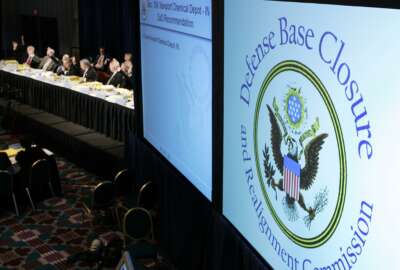
Retirement: For many, it’s no longer when, but if…
Back in the day, retiring from the government was easy, but Senior Correspondent Mike Causey says people now don't think about when they can retire, but if they can...
Back in the day, someone who decided on a federal career could figure out, almost from day one, when he or she would be able to retire on a guaranteed annuity fully indexed to inflation. The longer a person worked under the old CSRS retirement plan, and the higher his or her salary, the bigger the pension. Someone with 41-plus years — and there were lots of them — could get a starting annuity equal to 80 percent of salary. Any retirement plan contributions made by them after that 80 percent cutoff were returned to them at retirement. With interest.
Gone are the days.
Today, the vast majority of active-duty, civilian federal workers face a more confusing retirement picture. For some, maybe many people under the “new” FERS retirement program, the question isn’t when they can retire, it’s more like if they can retire. Ever.
The FERS annuity (the guaranteed benefit from the government) is about half the amount available to workers under the older CSRS program. FERS employees contribute a lot less to the retirement fund than their CSRS colleagues. But FERS covered employees pay into Social Security. And they get a huge break by being eligible for a 5 percent government match to their Thrift Savings Plan accounts, if they contribute at least 5 percent themselves.
For CSRS employees, the TSP is a nice perk, even without any government match. For FERS employees, the TSP is critical . Though optional, it is one of the three pillars of their retirement. When the TSP was first made available, experts estimated it would provide anywhere from one-third to one-half of the typical FERS retirees’ after-work income. That’s a lot.
FERS employees who hit their minimum retirement age (MRA) can, in many cases, retire before they are age 62. While they can’t get Social Security benefits until that age, they are eligible for a Social Security Supplement. It can range from a few hundred dollars to several thousand dollars each year. For many would-be retirees, it is the deal maker/deal breaker. Without it, many people decide they can’t afford to retire on only their FERS pension and their TSP account. For the official explanation of how the supplement works (and what you would lose if it is repealed) , click here.
Although it isn’t likely to happen this year, Congress is looking at a plan to eliminate that Social Security supplement. If that happens — and again it’s a long-shot this year — it will make working till you drop not an option, but a necessity for many FERS employees.
Nearly Useless Factoid
By Michael O’Connell
Hillel the Elder is the author of the saying: “If I am not for myself who is for me? And being for my own self, what am ‘I’? And if not now, when?”
Source: Wikipedia
Copyright © 2025 Federal News Network. All rights reserved. This website is not intended for users located within the European Economic Area.
Mike Causey is senior correspondent for Federal News Network and writes his daily Federal Report column on federal employees’ pay, benefits and retirement.
Follow @mcauseyWFED






